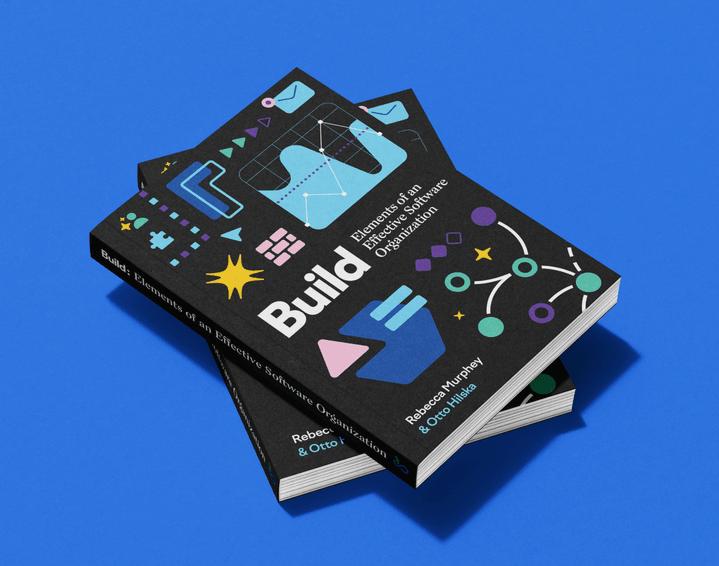As Senior VP of Engineering at Engine, Egan Royal leads a 250+ person engineering organization built for speed. His role is fundamentally about delivery — ensuring tight estimates, maintaining accountability, and hitting aggressive timelines in a market where velocity determines success.
We feel like it’s a race between us and anybody else that can compete for small to medium companies managing their business travel. This urgency drives everything from team organization to performance management across the engineering organization.
Senior VP of Engineering
Engine recently rebranded from Hotel Engine after expanding beyond hotel booking. The company has more than doubled their headcount over the past year, creating the challenge of maintaining productivity while onboarding new team members at scale. Unlike many organizations, Engine exclusively hires experienced engineers who can immediately contribute to their codebase.
We currently only have senior, staff, and principal engineers because it’s a competitive space and we need to gain market share quickly. At any other company, engineering managers would spend 70-80% of their time coaching the engineers in their teams. I would rather have them spend 20-30% of their time doing that and the bulk of their time on delivery.
Senior VP of Engineering
With such rapid growth and aggressive timelines, Engine wanted better visibility into engineering productivity across all levels of the organization — from individual contributors to directors to executive leadership. It was important for them to find a solution that could adapt to their varied processes rather than forcing them to standardize around a single methodology, or use GitHub and Jira in a specific way for the tool to work.
Empowering the whole engineering organization with flexible, process-agnostic insights
When evaluating engineering intelligence platforms, Engine prioritized flexibility over rigid process requirements. Other tools required extensive process changes and meticulous data hygiene to deliver value, which was not an option due to Engine’s focus on delivery speed and quality.
We need the business to drive the process, not the process to drive the business. Some teams make more sense to be more Kanban style and some teams, depending on where they are in the call stack, can run sprints. It’s whatever works best for that particular problem — and Swarmia supports that.
Senior VP of Engineering
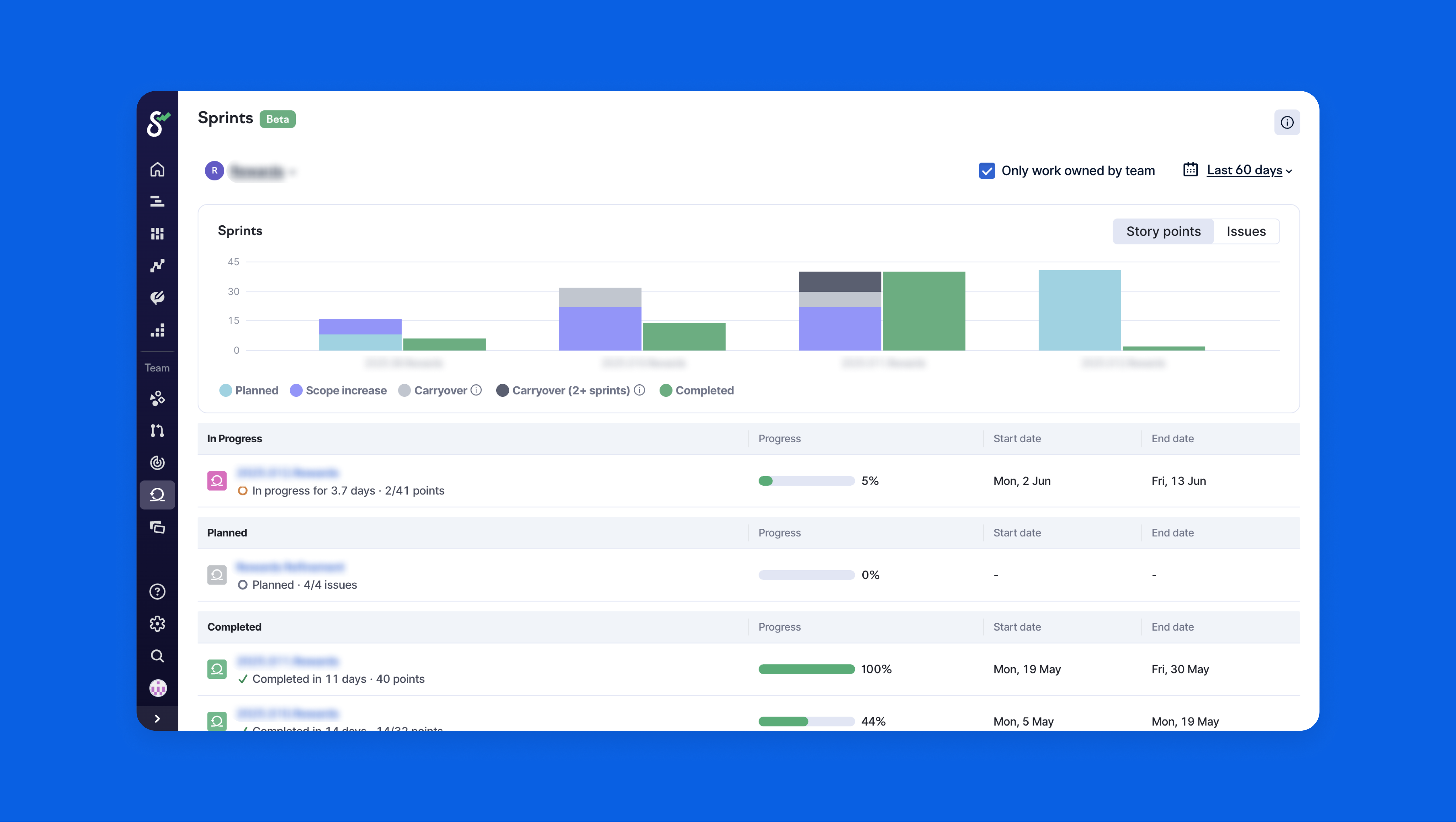
Engine found that Swarmia could provide immediate value without requiring them to standardize their varied approaches across teams. Rather than spending months retraining teams on specific labeling conventions or workflow requirements, they could simply point Swarmia at their existing GitHub and Jira instances and start gaining insights immediately.
What I like about Swarmia is you connect it to your existing tools and then you get a whole bunch of information without having to change your process and go through hours of consulting to make sure that the labels on the tickets are just right.
Senior VP of Engineering
Executive-level visibility into developer productivity
At the leadership level, Egan focuses on high-level metrics that help him understand overall engineering health and productivity trends. He regularly tracks contributors, merged pull requests, and pull requests in progress — metrics that give him a clear picture of engineering output across the organization.
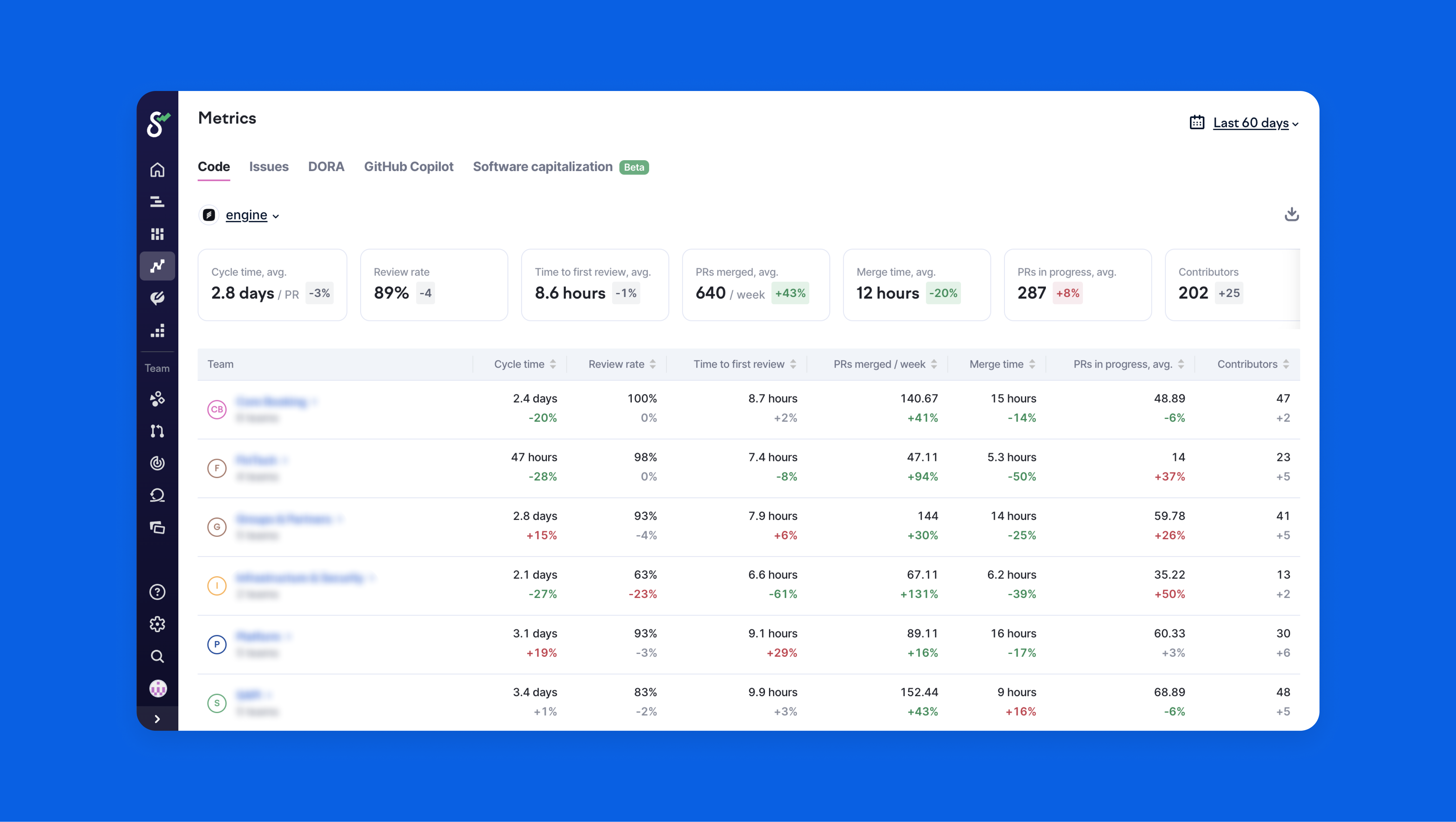
I like to look at things like the number of contributors over a period of time. Same thing with merged pull requests. PRs in progress is an interesting number too, but it tells you what’s going on ahead of time.
Senior VP of Engineering
These metrics serve a dual purpose: measuring the impact of Engine’s aggressive hiring and tracking potential productivity gains from AI coding tools like GitHub Copilot and Cursor. With over 90 new engineers hired in less than six months, Egan uses Swarmia to ensure that increased headcount translates to maintained or improved productivity rather than the typical slowdown that comes with rapid scaling.
As we hire new engineers, our CEO wants to see that they are productive. So the number of contributors is a pretty important number. If I’ve got 220 people that should be pushing pull requests, that number of active contributors should be pretty close to 220.
Senior VP of Engineering
Director-level insights for team performance
Engineering directors at Engine use Swarmia to understand productivity patterns across their teams and identify high-performing individuals. The platform allows them to see who is contributing the most pull requests and track performance trends over time.

Directors can see who is pushing the most pull requests and how different people are producing over time. I could technically pull these numbers from GitHub, but it’s really nice to go click in Swarmia and just have it right there.
Senior VP of Engineering
Team and manager-level workflow optimization
At the team level, engineering managers use Swarmia to inform their daily standups and get better visibility into work in progress. Rather than relying solely on traditional boards, managers can see the complete picture of where pull requests and issues stand and how long teams are waiting for reviews.
At the individual engineering level and at the engineering manager level, being able to run standups and see in one place what’s happening to pull requests versus what’s happening to Jira tickets. That additional Swarmia view on where PRs are and where you’re spending time and how long we’re waiting on pull requests to get reviewed is really valuable.
Senior VP of Engineering
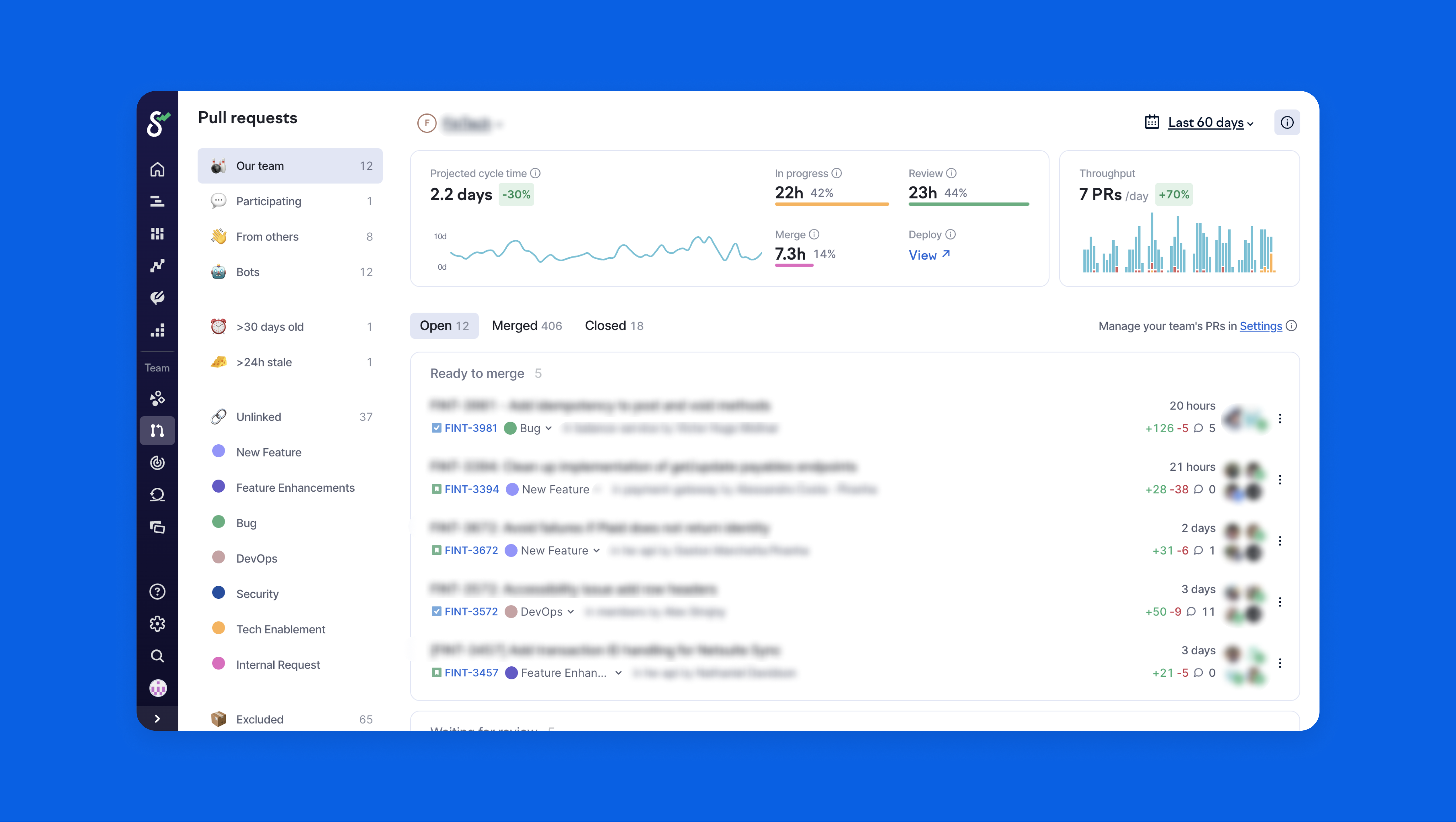
Several engineering managers have become particularly engaged with the platform, using it to ensure their teams maintain strong productivity metrics. While Engine doesn’t require teams to use Swarmia, engineers understand that productivity is measured through the platform, creating natural adoption and engagement.
Maintaining developer experience during rapid growth
As Engine maintains their breakneck pace of development and hiring, leadership recognizes that sustainable speed requires more than just tracking delivery metrics. The engineering organization uses Swarmia’s developer experience surveys to ensure their high-performance culture doesn’t come at the cost of engineer satisfaction or burnout.
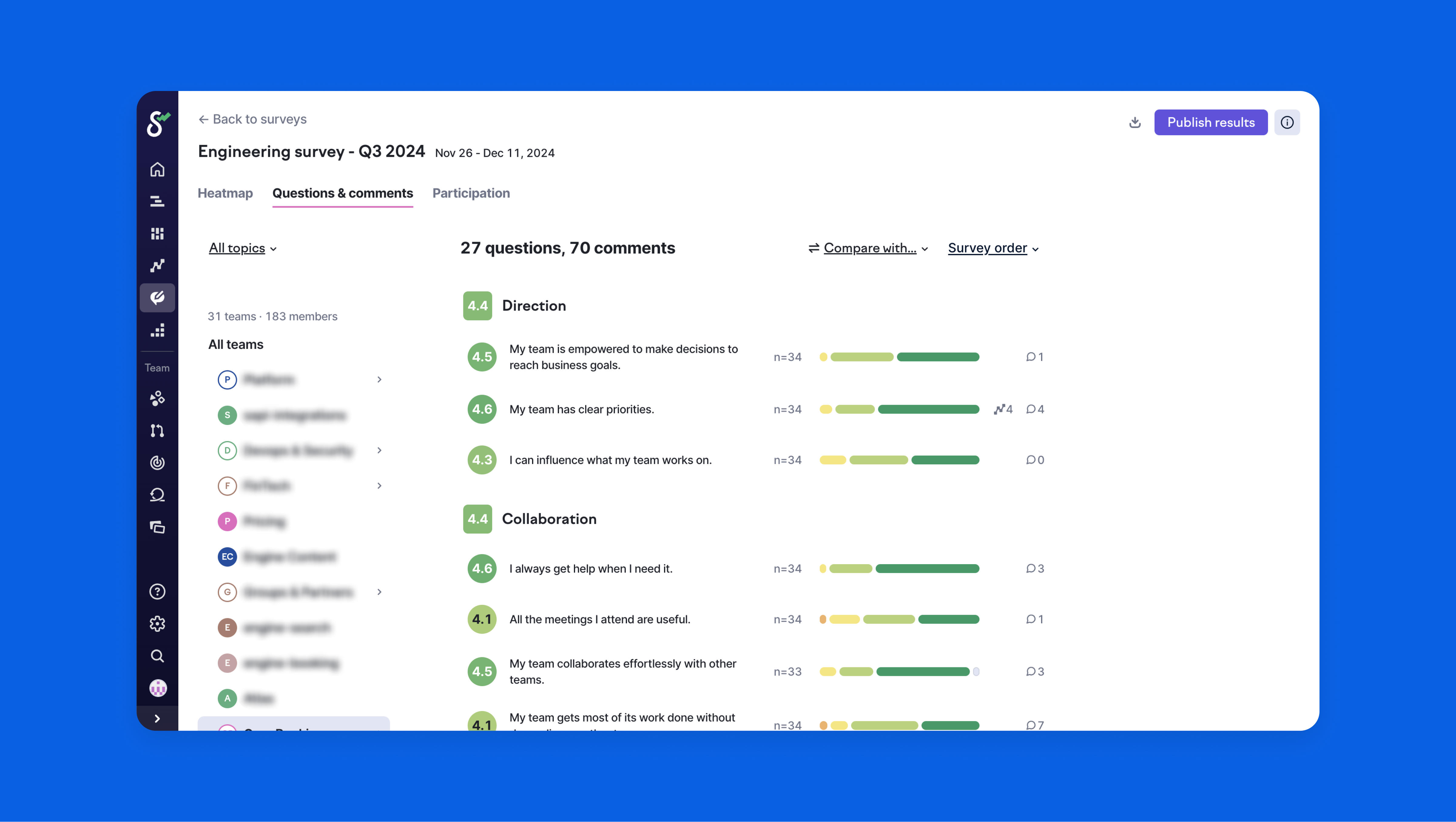
We’re asking a lot of our engineers — tight timelines, rapid scaling, constant delivery pressure. Developer experience surveys help us understand if we’re pushing too hard in certain areas or if there are systemic issues slowing people down that we can actually fix.
Senior VP of Engineering
The combination of quantitative delivery metrics with qualitative developer feedback gives Engine’s leadership a complete picture of engineering health during their rapid transformation.
The flexibility to adapt to different team processes while providing consistent visibility across the organization has made Swarmia an integral part of how Engine manages its rapid growth and maintains the speed needed to compete in their fast-moving market.
From hotels to full-service travel: Delivering at unprecedented speed
Engine’s transformation from a hotel-focused platform to a comprehensive business travel solution highlights the kind of velocity that their engineering culture and measurement approach enables. The expansion into flights and rental cars represents not just feature development, but fundamental platform evolution executed at remarkable speed.
Three months from concept to production with flights
When Engine decided to expand beyond hotels, the engineering team faced the challenge of building an entirely new vertical from scratch. Rather than extending their existing monolithic Rails application, they chose to build a new platform architecture using gRPC contracts that would enable parallel development across multiple teams.
We locked ourselves into a room, did the first pass at the internal contracts, came out and got everybody to understand which parts of the contracts they were responsible for. We pushed everybody at the same time and tested all the integrations at the end.
Senior VP of Engineering
The approach followed design-by-contract principles, allowing multiple engineering teams to work simultaneously on different components while maintaining integration compatibility. This parallel development model was crucial to achieving their aggressive timeline.
The results were impressive: Engine went from initial contract design to booking their first flight in production in just three months. This timeline covered the complete development cycle, including platform architecture, third-party supplier integrations, testing, and production deployment.
Using platform investments for exponential gains
The real validation of Engine’s platform-first approach came with their next expansion into rental cars. Using the same architectural foundation they had built for flights, the team was able to deliver car rental booking functionality in the same three-month calendar timeframe — but using only one quarter of the engineering hours.
The same play for rental cars took about the same amount of calendar time, but about one quarter of the engineering hours. The infrastructure was already in place. Car rentals are substantially less complex, and so we were able to layer that on quickly.
Senior VP of Engineering
This dramatic efficiency gain demonstrates how thoughtful platform investments can compound over time. The initial engineering effort to build flexible, reusable contracts and infrastructure paid dividends when expanding to additional verticals.
Looking ahead: measuring AI-driven productivity
As Engine continues to optimize for velocity, they’re heavily investing in AI coding tools like GitHub Copilot and Cursor to further accelerate development. However, measuring the true productivity impact of these tools presents a new challenge that traditional metrics don’t easily capture.
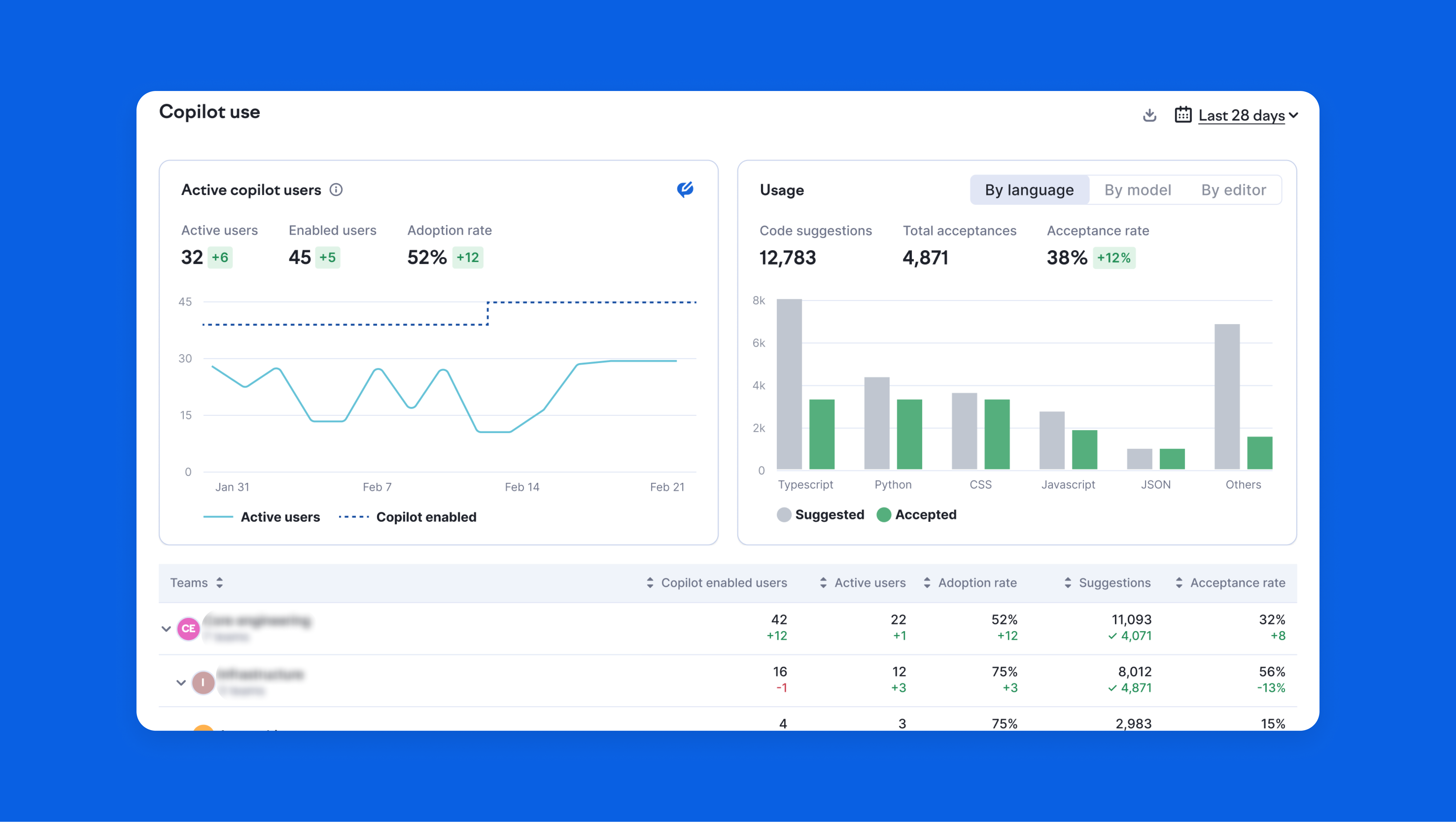
What I want to be able to do is track any productivity increases that we might be able to attribute back to AI. I know that’s tricky to do but I see Swarmia as a key component in solving this measurement challenge.
Senior VP of Engineering
By maintaining consistent visibility into pull request metrics, contributor activity, and delivery velocity before, during, and after AI tool adoption, Engine can begin to isolate the impact of these investments.
Metrics around pull requests are going to be important right now. If you think about how changes come into production via pull request, you want to be able to see the actual changes to the actual code. This foundational visibility becomes even more critical as AI tools change how engineers write and review code.
Senior VP of Engineering
Swarmia, the same platform that helped Engine maintain oversight during their rapid expansion from hotels to full-service travel, now positions them to quantify and optimize the next frontier of engineering productivity: AI-augmented development.
